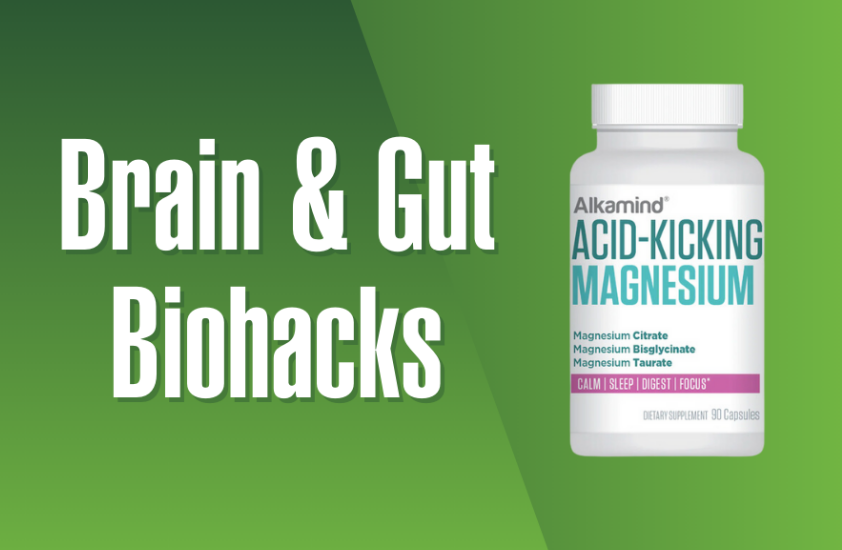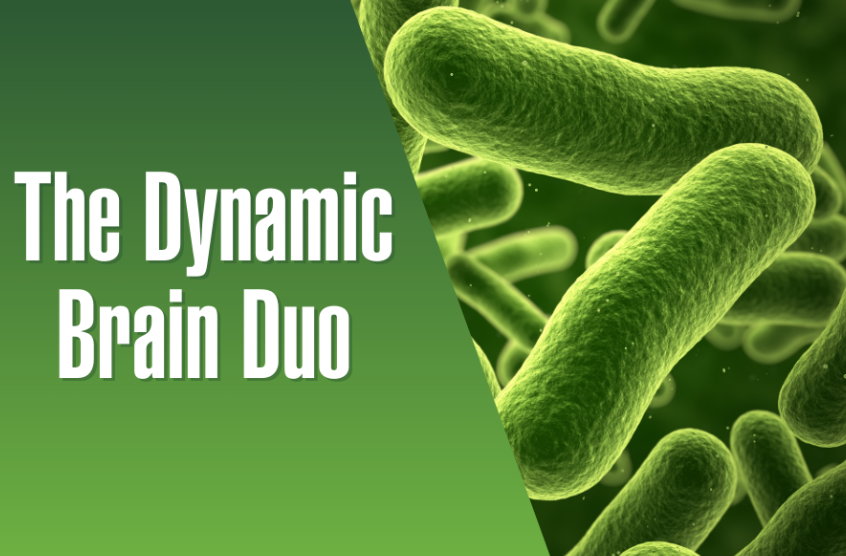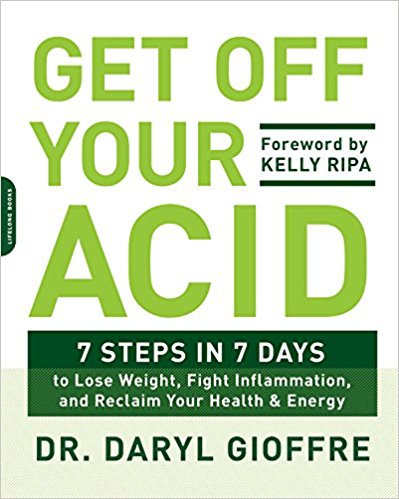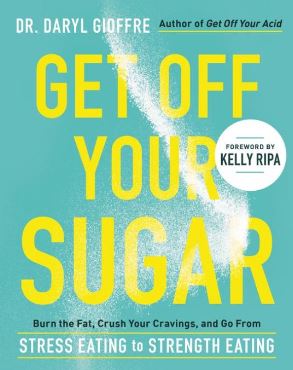
I’ve got grains on the brain today.
There’s so much talk about getting whole grains into your diet, but I want to fill you in on why you should do the opposite, especially when it comes to the one “healthy whole grain” you should avoid at all costs.
Did you know that ALL grains have the ability to become contaminated with fungal mycotoxins, which are toxic forms of fungus that have long-term, serious health effects including immune deficiency and certain cancers?
It’s true – the World Health Organization recently released a fact sheet about mycotoxins that says they “appear in the food chain as a result of mold infection of crops” of what they call cereals, aka:
- Corn
- Wheat
- Rice
- Peanuts
- Soybeans
- Sunflower seeds
- Certain spices
- Tree nuts
- The milk of cows fed those grains
Truthfully, if you want to live your healthiest life, your best bet is to stop eating ALL grains!
Now you might wonder why I recommend quinoa so often. Good question. Quinoa isn’t actually a grain. It’s a seed! So it’s not subject to fungal mycotoxins from groundwater.
But we’ll come back to that. First, there’s more you need to know.
Pop quiz: On that list above of the “cereals” as the WHO calls them, which of those top 3 grains is the least bad for you – corn, wheat, or rice?
Some of you might say wheat because most people by now know that corn is barely even digestible by the human body and it’s definitely not good for you.
But wheat is full of gluten, so many of you would probably say rice, right? Or more specifically, you’d say brown rice isn’t so bad.
Here’s what you need to know about rice. It contains dangerous levels of arsenic!
The Environmental Protection Agency says that there is no “safe” level of exposure to inorganic arsenic, the type found in rice.
 You might be wondering… Does arsenic transfer to the body of the person who ate the rice? It does. Consumer Reports revealed that people who ate a diet that included rice were 44% more likely to have arsenic levels in their blood, and it disproportionally affected certain ethnic groups including Latino and Asian people.
You might be wondering… Does arsenic transfer to the body of the person who ate the rice? It does. Consumer Reports revealed that people who ate a diet that included rice were 44% more likely to have arsenic levels in their blood, and it disproportionally affected certain ethnic groups including Latino and Asian people.
Location is Key
Another question that people often ask is… The Japanese culture consumes a lot of brown rice – Well, why are Japanese people so healthy if rice is bad? That’s a great question. The problem is not the rice itself. The problem comes from the toxins in the soil and water that the rice absorbs.
90% of the rice that we eat here in the United States is grown here, mostly in the lower Mississippi delta – Arkansas, Louisiana, Mississippi, Missouri, and Texas. That region has a long history of producing cotton, a crop that was heavily treated with arsenic pesticides. Even today, some arsenic herbicides are still used.
Water that floods the rice fields can be contaminated with even decades-old arsenic. Not only that, but in some places, chickens are fed drugs containing arsenic and their waste is used to fertilize fields (even on organic farms) growing crops like rice.
 I also have a theory that because Japanese people eat a lot more fish high in Omega-3 fats, which decrease inflammation, they are less likely to get sick from any arsenic in their rice. And in some rice-consuming countries, it’s customary to rinse rice before cooking, or cook it in excess water then drain it off, as they do in Bangladesh. Remember, when Asian Americans start eating the Standard American Diet (SAD), they get sick with the same chronic degenerative diseases we get like heart disease, diabetes, and cancer.
I also have a theory that because Japanese people eat a lot more fish high in Omega-3 fats, which decrease inflammation, they are less likely to get sick from any arsenic in their rice. And in some rice-consuming countries, it’s customary to rinse rice before cooking, or cook it in excess water then drain it off, as they do in Bangladesh. Remember, when Asian Americans start eating the Standard American Diet (SAD), they get sick with the same chronic degenerative diseases we get like heart disease, diabetes, and cancer.
Which is Better: Brown or White?
So you might be thinking, I don’t eat much rice, and when I do, it’s brown rice, so I’m probably okay.
Well which do you think has higher levels of arsenic?
Both have arsenic, but it might shock you to know that of the two, brown rice has 80 times more arsenic than white rice!
The reason brown rice has better nutritional qualities is the same reason is has so much more arsenic. It includes all 3 layers of the grain, whereas white rice strips away the outer 2 layers, and those are where the arsenic is mostly found.
So if you’re going to eat rice, white is ACTUALLY better for you, even though it has virtually no nutrients. I recommend if you are going to eat rice that you do so with sushi containing Pacific salmon so you’re getting some anti-inflammatory Omega-3 fats along with that arsenic. But the best course of action is that we all avoid any and all rice.
Most importantly, never feed babies transitioning to solid foods rice cereal. This was a staple of babies’ diets for a long time, and Consumer Reports found concerning levels of arsenic in all brands they tested.
”Why is this SO dangerous for babies? Because the blood-brain barrier doesn’t fully form until age 2, so these toxins literally have free range to the brain!
 As a researcher at Johns Hopkins School of Public Health put it, “The more we learn about arsenic’s additional effects on the developing brain, the more concerned I am by these levels of arsenic being found in infant and toddler rice cereal.
As a researcher at Johns Hopkins School of Public Health put it, “The more we learn about arsenic’s additional effects on the developing brain, the more concerned I am by these levels of arsenic being found in infant and toddler rice cereal.
Even children’s and adult’s rice cereals had arsenic levels that were “cause for concern” to Consumer Reports. And pregnant women need to be especially careful because of fetal brain development.
All rice products – rice milks, rice crackers, rice cakes, rice cereals, and gluten free product made with rice like rice pastas – expose you to potentially harmful levels of arsenic.
If you eat rice once in a blue moon, the potential exposure is probably not a big deal. But most people who eat rice eat it repeatedly, and there is a bio-accumulation of these toxic poisons in the body and the tissues over time.
So What Should You Eat Instead!
Going back to that list above, you now know that rice is the worst of the 3 grains – corn, wheat, and rice – that could be infected with fungal mycotoxins. But that doesn’t mean you should swap corn or wheat!

All 3 grains dump insulin into your bloodstream, causing your insulin to spike, which triggers the inflammatory response and fat-storing hormones. Not only does this lead to weight gain, it also leads to serious conditions like leaky gut syndrome and diabetes.
So the best food you can swap rice with is not a grain at all, but a seed – quinoa. Because it’s a seed, it has a higher quantity of protein than a grain, so it doesn’t trigger the insulin response that wheat, corn, and rice do. It still should be eaten in moderation, but it’s a much more nutritious option.
Does it ever feel like the more you learn about food, every food you could possibly eat has parts that could be bad for you? Sure, some more than others, but when even the spinach we eat isn’t as nutritious as it once was, it’s hard to know how to do what’s best for your health.
That’s why I created Alkamind Daily Minerals, so that your body can restore its natural, alkaline state each night while you sleep. It will not only help your body fight dangerous toxins from the food we eat and the air we breathe, it will also ensure a better night’s sleep.
 Minerals is the single biggest deficiency in the human body. You need it, and so do your children. We mentioned brain health earlier – did you know that the #1 neuro-protector of your brain is MAGNESIUM! That is why your kids should have a scoop of Daily Minerals every day, and so should you. Check it out, and GET OFF YOUR ACID!
Minerals is the single biggest deficiency in the human body. You need it, and so do your children. We mentioned brain health earlier – did you know that the #1 neuro-protector of your brain is MAGNESIUM! That is why your kids should have a scoop of Daily Minerals every day, and so should you. Check it out, and GET OFF YOUR ACID!
Dr. Daryl
 Skip to content
Skip to content








1 comment
intersting article. thanks for sharing!